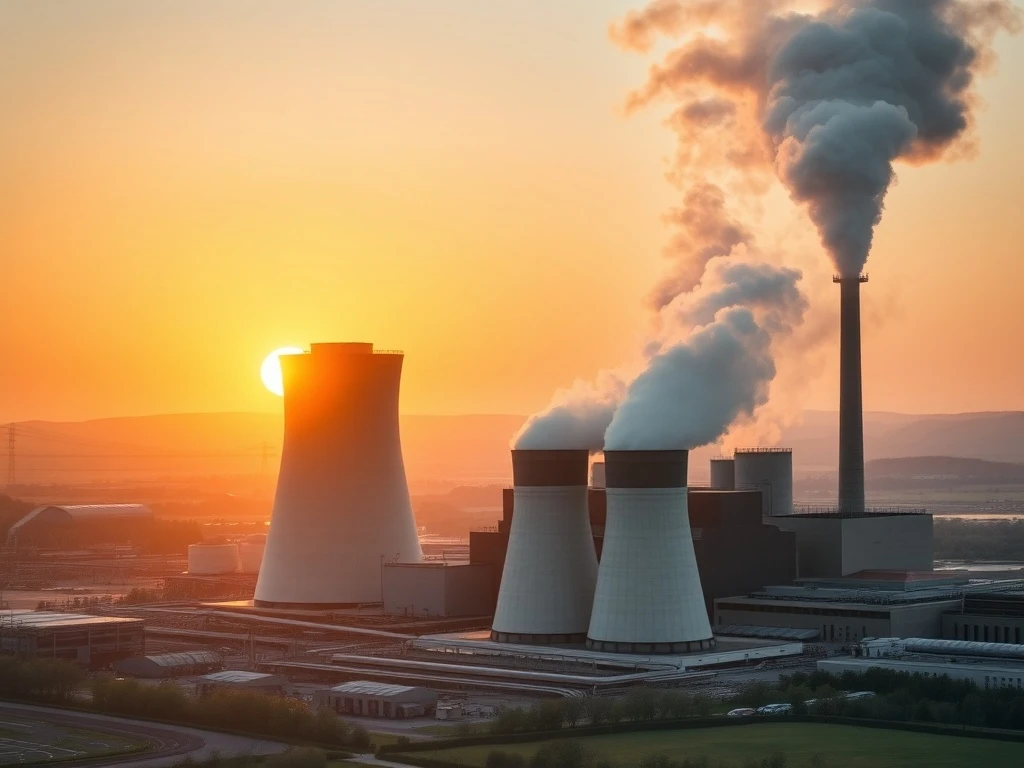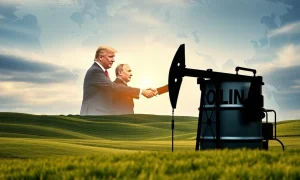In the world of energy, few assets draw as much scorn as coal. Environmental concerns understandably dominate the narrative. Yet, despite widespread efforts to transition away, coal continues to play a significant, often overlooked, role in the global energy landscape. For business leaders and investors, understanding the nuanced reasons behind this resilience is crucial. The undeniable **future of coal**, while challenging, holds complex implications for markets, policy, and global development.
Global Energy Realities: Fueling the Future of Coal
The world’s energy demands are escalating rapidly. Developing nations, in particular, require vast amounts of affordable power to industrialize and improve living standards. Renewables like solar and wind are growing fast. However, they face limitations. For instance, they are intermittent, meaning they do not always produce power. Storing large-scale renewable energy remains expensive. Consequently, traditional base-load power sources are still essential.
Coal, despite its environmental drawbacks, offers a consistent and reliable energy supply. Many countries possess abundant domestic coal reserves. This reduces reliance on volatile international oil and gas markets. Furthermore, existing coal-fired power plants represent significant infrastructure investments. Shutting them down prematurely can lead to economic disruption. Therefore, the immediate **future of coal** is often tied to energy security and economic stability.
Economic Imperatives: The Cost-Effective Future of Coal
One of coal’s primary advantages is its cost-effectiveness. In many regions, coal remains the cheapest source of electricity generation. This affordability is critical for industries and households alike. High energy costs can stifle economic growth. They can also exacerbate poverty.
Consider the following economic factors:
- Abundant Reserves: Coal is widely distributed globally. This makes it accessible to many nations.
- Established Infrastructure: Power plants and supply chains are already in place. This reduces upfront investment needs.
- Price Stability: Coal prices can be more stable than natural gas or oil. This offers predictability for long-term planning.
These factors contribute to coal’s enduring appeal. Developing economies, in particular, prioritize accessible and affordable energy. They often lack the capital for rapid, full-scale renewable transitions. Thus, for a considerable period, the **future of coal** will likely remain intertwined with economic development.
Technological Adaptations: Shaping the Future of Coal
While often seen as a relic, coal technology is not static. Significant efforts are underway to make coal combustion cleaner. These technologies aim to reduce emissions. They focus primarily on carbon dioxide (CO2) and other pollutants. Carbon capture, utilization, and storage (CCUS) is a key area of research. This technology captures CO2 emissions from power plants. The CO2 is then stored underground or used for other purposes.
Other advancements include:
- High-Efficiency, Low-Emissions (HELE) Plants: These modern plants burn coal more efficiently. They produce fewer pollutants per unit of energy.
- Flue Gas Desulfurization: This process removes sulfur dioxide. Sulfur dioxide causes acid rain.
- Nitrogen Oxide Control: Technologies reduce nitrogen oxide emissions. These contribute to smog.
While CCUS technologies are still expensive and not widely deployed, their development suggests a potential pathway. They could allow coal to remain a part of the energy mix. This would be true even as countries strive for lower emissions. Therefore, technological innovation plays a role in defining the long-term **future of coal**.
Geopolitical Dynamics: National Interests and the Future of Coal
Geopolitics profoundly influences energy choices. Nations prioritize energy independence and security. Relying heavily on imported energy sources creates vulnerabilities. It can expose economies to supply disruptions and price volatility. Countries with significant domestic coal reserves often view them as strategic assets.
For example, nations like China, India, and Indonesia are major coal producers and consumers. They rely on coal for a large portion of their energy needs. Their energy policies reflect national security interests. They also reflect the need to power vast populations and growing industries. Transitioning away from coal quickly would require massive investments. It would also risk economic instability. Consequently, these nations are likely to continue utilizing coal for decades. This reality significantly impacts the global **future of coal**.
Furthermore, international relations can influence energy decisions. Geopolitical tensions can disrupt traditional energy supply routes. They can also lead to sanctions or trade disputes. In such scenarios, domestically sourced coal provides a crucial buffer. It ensures a stable energy supply. This strategic importance underpins coal’s continued relevance in many parts of the world.
Investment Perspectives: Navigating the Future of Coal
Despite the negative public perception, some investors continue to see value in coal. This perspective often focuses on short-to-medium term returns. It also considers the gap between policy ambitions and energy realities. Coal companies, particularly those in regions with high demand, can generate significant profits. This is especially true during periods of high energy prices.
Investors might consider:
-
- Commodity Cycles: Coal, like other commodities, experiences price cycles. Periods of high demand can lead to substantial gains.
Undervalued Assets: Some coal companies may be undervalued due to ESG (Environmental, Social, and Governance) pressures. This can present opportunities for investors with different risk appetites.
- Emerging Market Growth: Growth in developing economies drives demand for reliable energy. Coal often fills this need.
However, investing in coal carries significant risks. These include regulatory changes, declining long-term demand in developed nations, and reputational damage. Nevertheless, for a segment of the investment community, the short-term market dynamics and the persistent demand in certain regions still make the **future of coal** a topic of financial interest.
The Unavoidable Truth: What the Future of Coal Holds
The narrative surrounding coal is complex and often contradictory. On one hand, global climate goals demand a rapid phase-out of fossil fuels. On the other, economic realities, energy security concerns, and technological limitations present significant hurdles. Coal’s journey is far from over. It remains a foundational energy source for a substantial portion of the world. Its persistence highlights the challenges of a global energy transition. It underscores the need for pragmatic approaches.
Ultimately, the **future of coal** will be shaped by a delicate balance. This balance involves environmental imperatives, economic development needs, and geopolitical strategies. While its dominance may wane in some regions, coal will likely continue to power industries and homes for decades to come, particularly in developing nations. Its role, though evolving, is a testament to its enduring, albeit controversial, utility.
Frequently Asked Questions (FAQs)
Q1: Why is coal still used extensively despite environmental concerns?
Coal remains widely used due to its affordability, abundance, and reliability as a base-load power source. Many developing nations rely on it for economic growth and energy security, as it’s often the cheapest and most accessible fuel for electricity generation. Existing infrastructure also makes rapid transitions difficult.
Q2: What is the primary environmental impact of coal?
The primary environmental impact of burning coal is the emission of greenhouse gases, particularly carbon dioxide (CO2), which contributes significantly to climate change. Coal combustion also releases pollutants like sulfur dioxide, nitrogen oxides, and particulate matter, leading to air pollution, acid rain, and respiratory issues.
Q3: Are there any technologies to make coal cleaner?
Yes, technologies like High-Efficiency, Low-Emissions (HELE) plants improve efficiency and reduce pollutants. Carbon Capture, Utilization, and Storage (CCUS) technologies aim to capture CO2 emissions before they enter the atmosphere. While promising, CCUS is currently expensive and not widely deployed.
Q4: How does the future of coal impact global energy markets?
The future of coal significantly impacts global energy markets by influencing energy prices, geopolitical stability, and the pace of renewable energy adoption. Its continued use, especially in large economies like China and India, means that coal demand and supply dynamics will remain a key factor in global energy commodity markets.
Q5: Is investing in coal still a viable option?
Investing in coal carries high risks due to environmental regulations and the long-term shift towards renewables. However, some investors may find short-to-medium term opportunities, particularly in regions with high demand and during periods of elevated energy prices. It is generally considered a high-risk, high-reward investment.
























